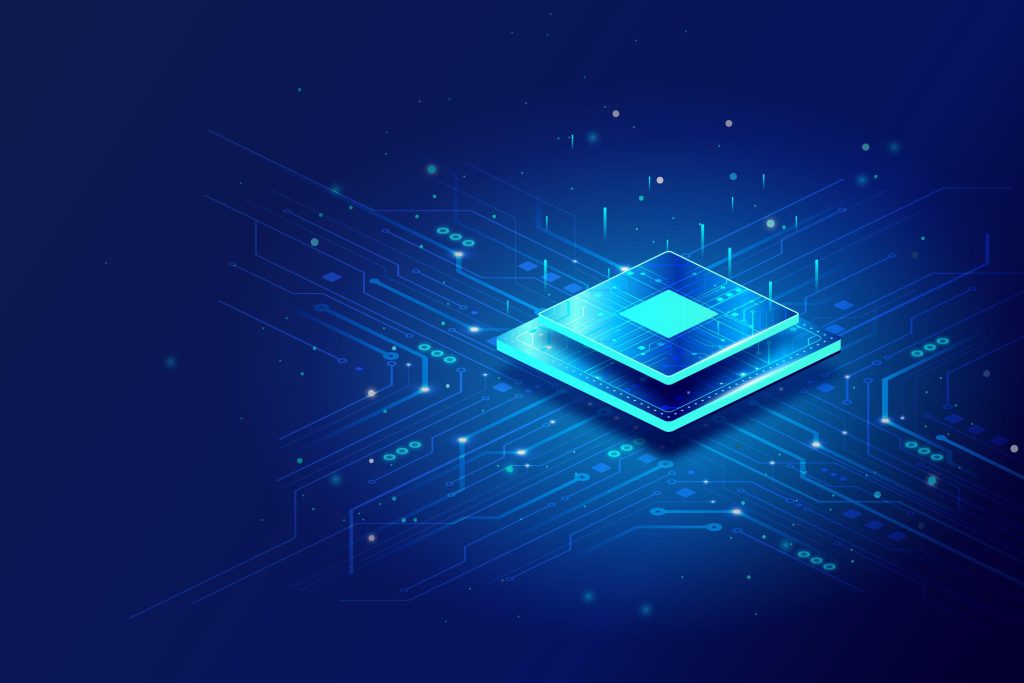
Choosing the right Graphics processing units (GPUs) is essential to computing systems, they assist in the performance of graphics applications such as video games, 3D modeling, and scientific simulations. In recent years, virtual GPUs (vGPUs) have emerged as a feasible alternative to traditional GPUs.
In this blog post, we will compare traditional GPUs to vGPUs and explore the benefits and drawbacks of each.
What is a Traditional GPU?
A traditional GPU is a physical device that is installed on a computer or server. It is designed to do complex mathematical calculations which are required for providing graphics. Traditional GPUs are used in high-performance computing systems such as gaming, scientific research, and machine learning.
What is a Virtual GPU?
A virtual GPU is a software-based solution that assists multiple virtual machines to share a single physical GPU. It is designed to provide the same level of performance as a traditional GPU while reducing the cost and complexity of managing multiple physical GPUs. Virtual GPUs are used in virtualized environments such as cloud computing and data centers.
Traditional GPU: Benefits and Limitations
Benefits
High performance: Traditional GPUs are designed to perform complex mathematical calculations required for rendering graphics. They are typically used in high-performance computing environments such as gaming, scientific research, and machine learning.
Low latency: It can process data quickly and efficiently, which makes it ideal for real-time applications such as gaming and video editing.
Highly customizable: Traditional GPUs can be customized to meet the specific needs of a particular application or workload.
Widely available: Traditional GPUs are widely available and can be purchased from a variety of vendors.
Limitations
High cost: Expensive, especially if you need a high-end model for demanding applications.
High power consumption: Requires a lot of power to operate, which can increase your energy costs.
Limited scalability: Limited by the number of physical devices that can be installed on a computer or server. This can make it difficult to scale up your computing resources as your workload grows.
Maintenance and administration: Require regular maintenance and administration to ensure that they are operating at peak performance.
Virtual GPU: Benefits and Limitations
Benefits
Cost-effective: vGPU allows multiple VMs to share a single physical GPU, which can reduce the cost of hardware and maintenance.
Improved performance: improve the performance of graphics-intensive applications by offloading the processing to the GPU.
Flexibility: VMs to be created and destroyed on demand, which can help organizations scale their resources based on their needs.
Isolation: vGPU can provide isolation between VMs, which can help to improve security and prevent interference between applications.
Limitations
Limited resources: The number of VMs that can share a single physical GPU is limited by the amount of memory and processing power available on the GPU.
Complexity: Implementing vGPU can be complex and requires specialized hardware and software.
Compatibility: Not all applications are compatible with vGPU, and some applications may require specific hardware or software configurations.
Performance overhead: vGPU can introduce a performance overhead due to the additional processing required to manage the virtualization.
Why Choose Virtual GPUs @ Infraoncloud in Desktop as a Service (DaaS) Environments
Enhanced Graphics Performance
Graphic-Intensive Applications: Virtual GPUs significantly improve the graphics performance of virtual desktop instances. In a DaaS environment where users engage in graphic-intensive applications, such as video editing or 3D modeling, vGPUs ensure a smoother and more responsive user experience.
Cost-Effective Resource Utilization
Shared GPU Resources: Virtual GPUs allow multiple virtual desktop instances to share a single physical GPU. This shared resource model enhances cost efficiency by optimizing GPU utilization across various users, reducing the need for dedicated GPUs for each virtual desktop.
Flexible Resource Allocation
Dynamic Resource Scaling: With vGPUs, resources can be dynamically allocated based on the demands of individual virtual desktops. This flexibility ensures efficient resource utilization, particularly in scenarios where certain desktops may require additional GPU power for specific tasks.
Isolation and Security
Isolation of Graphics Workloads: vGPUs provide a level of isolation between virtual desktops, ensuring that the graphical processing of one desktop does not impact the performance or security of others. This isolation is crucial in maintaining a secure and stable DaaS environment.
Improved User Experience
Responsive User Interfaces: Virtual GPUs contribute to a more responsive and interactive user experience. In DaaS, where end clients rely on constant connectivity to centrally managed servers, vGPUs help deliver a seamless desktop experience with enhanced graphics responsiveness.
Support for Graphics-Intensive Applications
3D Rendering and CAD: For users relying on DaaS for graphics-centric tasks, such as 3D rendering or Computer-Aided Design (CAD), vGPUs are indispensable. They ensure that these demanding applications run smoothly, fostering productivity and creativity among users.
Centralized Management and Maintenance
Efficient Data Center Operations: By leveraging vGPUs in host-based VMs, DaaS providers can efficiently manage and maintain centralized data center operations. This centralization simplifies updates, patches, and maintenance tasks related to the GPU infrastructure.
Compatibility with VDI Connection Brokers
Seamless Connection Establishment: Virtual GPUs seamlessly integrate with Virtual Desktop Infrastructure (VDI) connection brokers. The connection broker efficiently connects end clients to their virtual desktops, ensuring a streamlined and reliable connection process for users accessing DaaS resources.
Energy Efficiency
Reduced Power Consumption: Compared to traditional desktops with dedicated GPUs, vGPUs contribute to energy efficiency in a DaaS setup. By consolidating graphics processing on shared GPUs within the data center, overall power consumption can be optimized.

The integration of virtual GPUs in Desktop as a Service environments offers a multitude of advantages, ranging from improved graphics performance and cost-effective resource utilization to enhanced security and efficient centralized management. These benefits collectively contribute to a more robust and user-friendly DaaS experience. On this technological journey, InfraonCloud invites users to explore the advanced capabilities of virtual GPUs, unlocking a new era of seamless, high-performance cloud computing.
Explore the Future with InfraonCloud – Where Virtual GPUs Redefine Possibilities!
![]()
